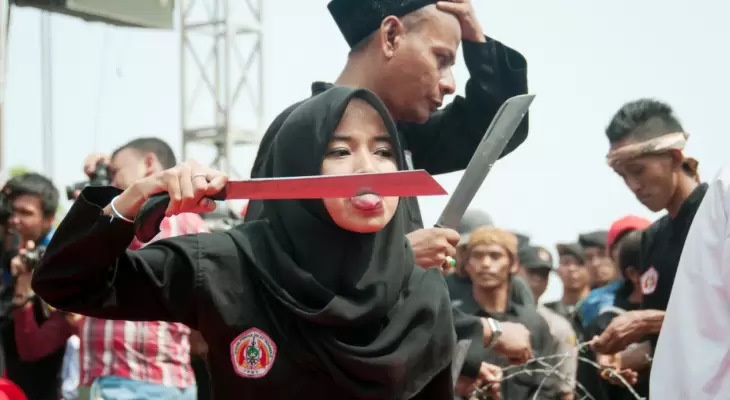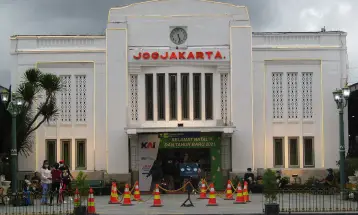Debus, Banten Cultural Arts with Islamic Nuance

Holiday Ayo - Debus has always been known as a traditional art form Banten Province which manifests body strength. It is undeniable that the wider community knows it as a scary attraction.
It's no secret, these art performers often display self-injury acts so that they are considered close to black magic.
This is indeed identical to the attraction that displays the knowledge of the body's immunity to the touch of a weapon or harp/dangerous object or hitting a hard object.
However, according to the Center for the Preservation of Cultural Values of West Java Province, it turns out that the Debus art was originally displayed as a means of spreading Islam. At that time, around the 16th century, local people still believed in the customs of their ancestors as their religion.
The most famous attraction is slicing certain body parts with sharp weapons, such as machetes. This attraction also often features a person with a pointed iron in the abdomen being hit with a large hammer. Surprisingly, the players weren't hurt at all.
In its development, debus was used as a medium to pump up the enthusiasm of the people of Banten in the face of Dutch colonialism during the reign of Sultan Ageng Tirtayasa.
For some time, this traditional art had disappeared along with the weakening of the Banten Sultanate under the rule of Sultan Rafiudin. Therefore, debus is no longer shown to the public.
After Indonesia's independence, this traditional art re-emerged in the 1960s as a means of entertainment. In addition, there is another name for a similar art, namely Al Madad which is seen by some as the forerunner of Debus.
Until now, the art of debus is revived and developed in the paguron or hermitage and the martial arts studio with different styles. There are at least three characteristics that develop, namely Cimande, Bandrong, and Reef.
Debus and silat cannot be separated from each other. Silat is the forerunner of debus which is one of the certain stages in the art of debus.
When the attraction debuts, there are a number of stages that the players perform:
1. Prepare equipment and inspect the arena.
2. The professor said a prayer for the smooth running of the show.
3. Playing accompaniment drums to invite the audience to approach the performance arena.
4. Showing silat attractions to warm the atmosphere, ranging from just ordinary ibing to padungdung.
5. Players put on a blast, from the lightest of attractions to the most dangerous peaks.








Leave a comment